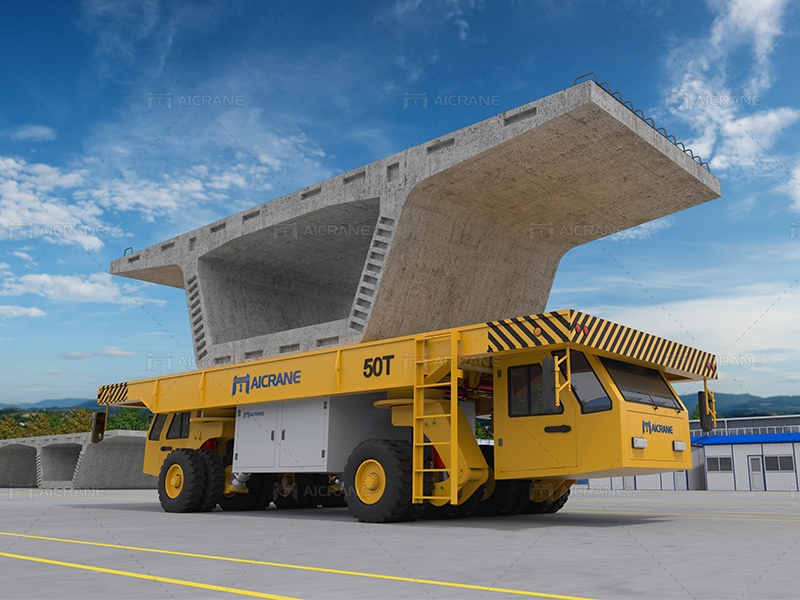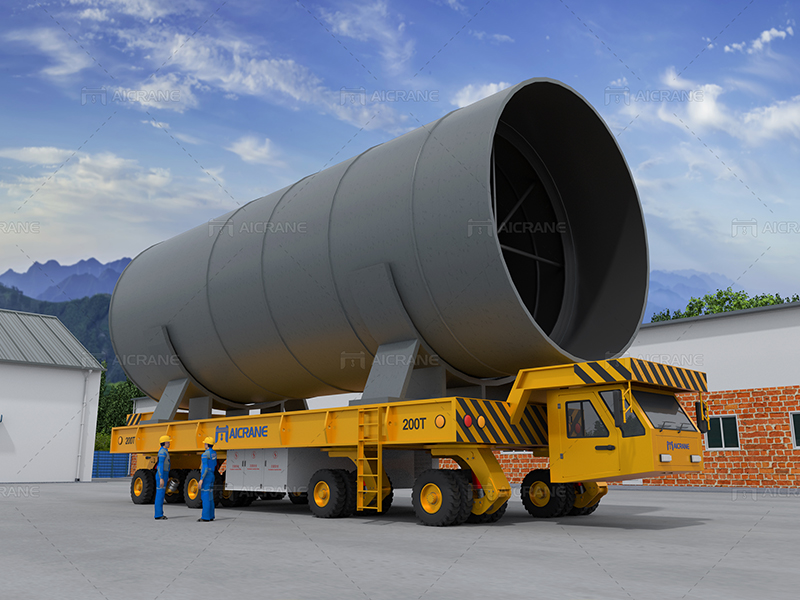In the dynamic world of heavy construction and infrastructure development, the need for efficient and innovative equipment is paramount. One such groundbreaking technology that has revolutionized the transportation of heavy loads is the hydraulic girder transporter. This marvel of engineering combines hydraulic power and precision control to transport massive girders and bridge components with unparalleled ease and safety.

Understanding Hydraulic Girder Transporters:
A hydraulic girder transporter is a specialized heavy-duty vehicle designed for transporting and placing large and heavy components like girders, beams, and other structures used in bridge construction. Unlike conventional transport methods, hydraulic transporters rely on a hydraulic system to lift, lower, and precisely position these colossal structures.
Key Components of Hydraulic Transporters:
Hydraulic System: At the heart of the hydraulic girder transporter is its sophisticated hydraulic system. This system consists of hydraulic cylinders, pumps, valves, and hoses that work in tandem to provide the necessary force and control for lifting and moving heavy loads. The use of hydraulics allows for precise and gradual movements, ensuring safety and accuracy in positioning.
Chassis: The chassis of a hydraulic girder transporter is specially designed to support the immense weight of the transported structures. It is often equipped with multiple axles and a robust suspension system to distribute the load evenly and maintain stability during transportation. The chassis also plays a crucial role in accommodating the hydraulic components and control systems.
Control System: Precision is key in heavy construction, and hydraulic girder transporters are equipped with advanced control systems. Operators can manipulate the hydraulic functions with a high degree of accuracy, allowing for smooth and controlled movements. Some systems even feature computerized controls for automated operations, further enhancing efficiency and safety.

Working Mechanism of Hydraulic Transporters:
The working mechanism of a hydraulic girder transporter involves a series of carefully orchestrated steps to lift, transport, and position heavy loads. The process typically includes the following stages:
Loading: The girder or structure is loaded onto the transporter using auxiliary lifting equipment such as cranes. This is a crucial step where the weight distribution and balance are carefully considered to ensure stability during transportation.
Hydraulic Lifting: Once loaded, the hydraulic system comes into play. Hydraulic cylinders extend to lift the load gradually. The controlled and synchronized movement of these cylinders ensures a stable and secure lift, preventing any sudden shifts or tilting.
Transportation: With the load securely lifted, the hydraulic girder transporter moves to its destination. The operator uses the control system to navigate the vehicle, and the hydraulic system assists in maintaining a smooth ride while absorbing shocks and vibrations.
Precision Placement: Upon reaching the construction site, the hydraulic girder transporter carefully lowers the load into its designated position. The precision control allows for accurate alignment, facilitating seamless integration with other structural elements.
Advantages of Hydraulic Girder Transporters:
Enhanced Safety: The use of hydraulics ensures a controlled and secure lifting process, minimizing the risk of accidents or structural damage. Operators have the ability to make fine adjustments, reducing the likelihood of errors during transportation and placement.
Efficiency and Speed: Hydraulic girder transporters significantly expedite the construction process by efficiently moving large components. The precision control allows for quicker and more accurate placement, saving valuable time in project schedules.
Versatility: Hydraulic girder transporters are versatile and adaptable to various construction scenarios. Their ability to handle different types of loads and navigate challenging terrains makes them indispensable in diverse construction projects.
Cost-Effectiveness: While the initial investment in hydraulic girder transporters may be substantial, their efficiency and speed contribute to cost savings in the long run. Projects are completed more swiftly, reducing labor costs and minimizing downtime.
Conclusion:
Hydraulic girder transporters stand as a testament to the innovation and technological advancements in the field of heavy construction. Their ability to transport and position colossal structures with precision, efficiency, and safety has significantly impacted the landscape of infrastructure development. As the demands for larger and more complex structures continue to rise, the role of hydraulic girder transporters is poised to become even more integral in shaping the future of construction. Through their remarkable capabilities, these hydraulic marvels are driving the industry towards greater heights, quite literally and metaphorically. To learn more, click here https://steelmillcranes.com/